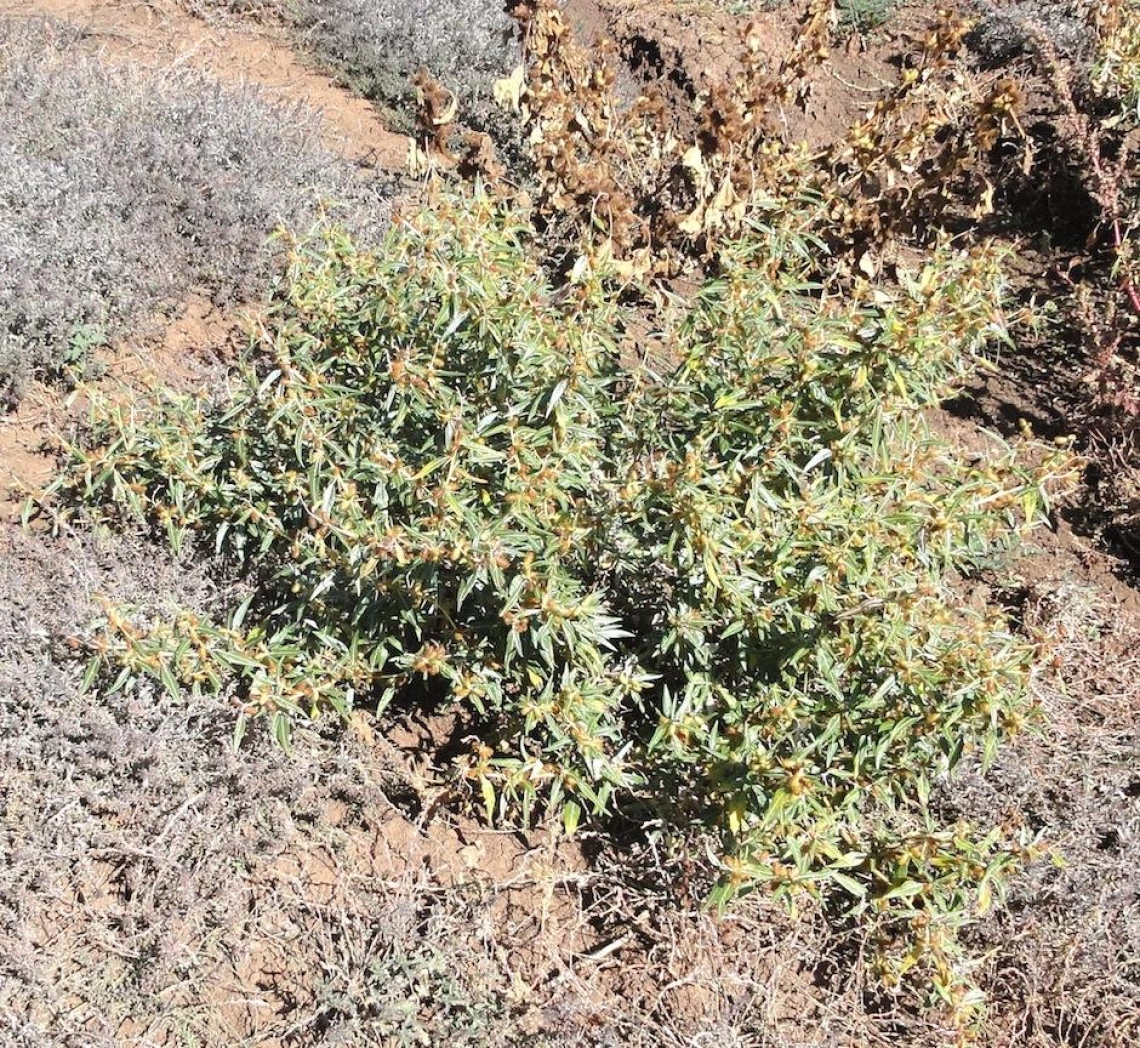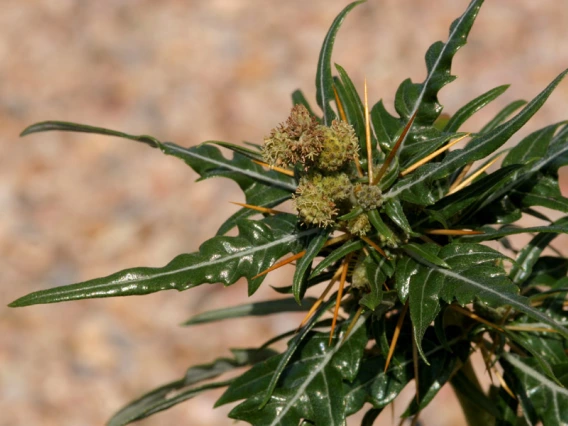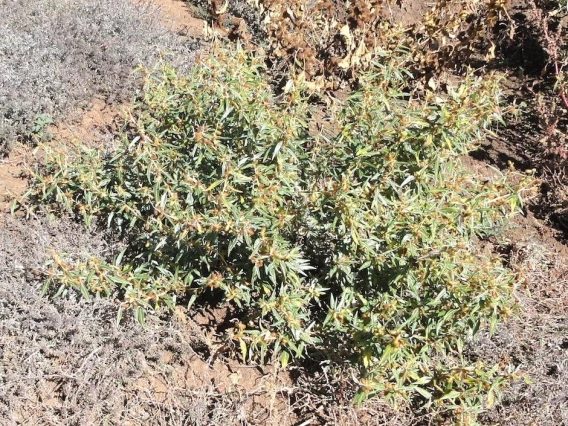Image

Thornburg
Common Name(s)
Spiny cocklebur
Bathurst burr
Cocklebur
Spanish-thistle
Dagger weed
Spiny burweed
Thorny burweed
Scientific Name
Xanthium spinosum
Family
Sunflower or Aster family (Asteraceae)
Reasons for concern
Spiny cocklebur can grow and spread quickly, outcompeting native plants and decreasing natural biodiversity. They are also poisonous to livestock.
Classification
Non-native
Botanical description
Spiny, branching forb
Leaves
Dark green alternating 1-2 ½ inch, irrecgualry lobed with toothed margins, white veins and hairy undersides
Stem(s)
Green to black erect branching stems with or without 1 or 2 gold spines at each node, 3 feet tall at flowering
Flowers
Cream-green colored, either on alternating petioles or erect stems
Native to
Chile
Where it grows
Cultivated or disturbed areas
Lifecycle
Annual
Reproduction
By seed
Weedy Characteristics
The hooked spines on the prolific fruit can easily attach to humans or wildlife, enabling them to disperse large distances. These seeds germinate very easily.
Control Strategies
Mowing and mechanical removal is effective before seeding. If removal is done after seeding, make sure seeds are not dropping and properly dispose of the entire plant. Repeat treatments are required to deplete the seed bank. Broad leaf selected herbicides are most effective when the plants are young, with around 3-5 leaves or before the plant flowers.



